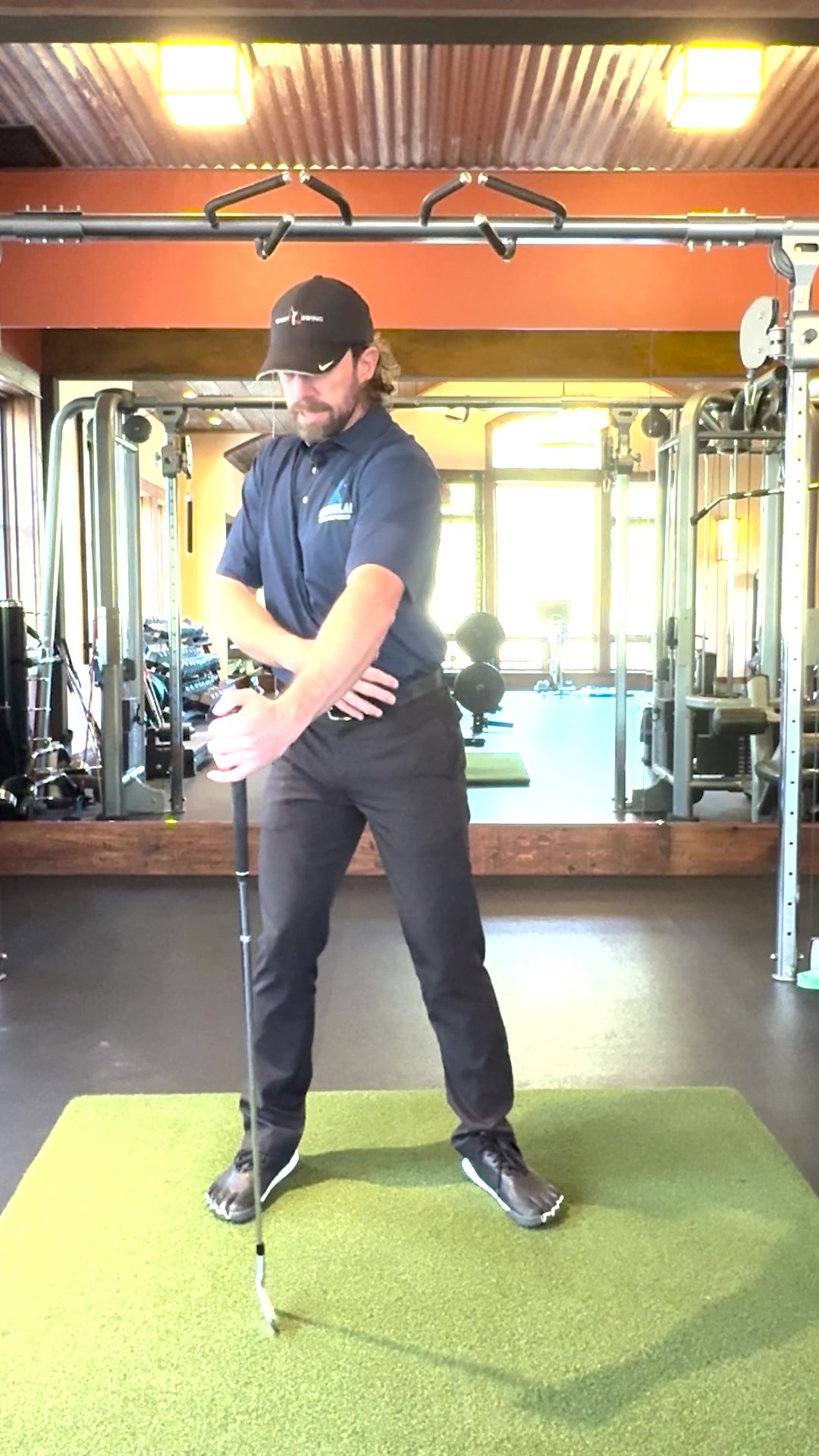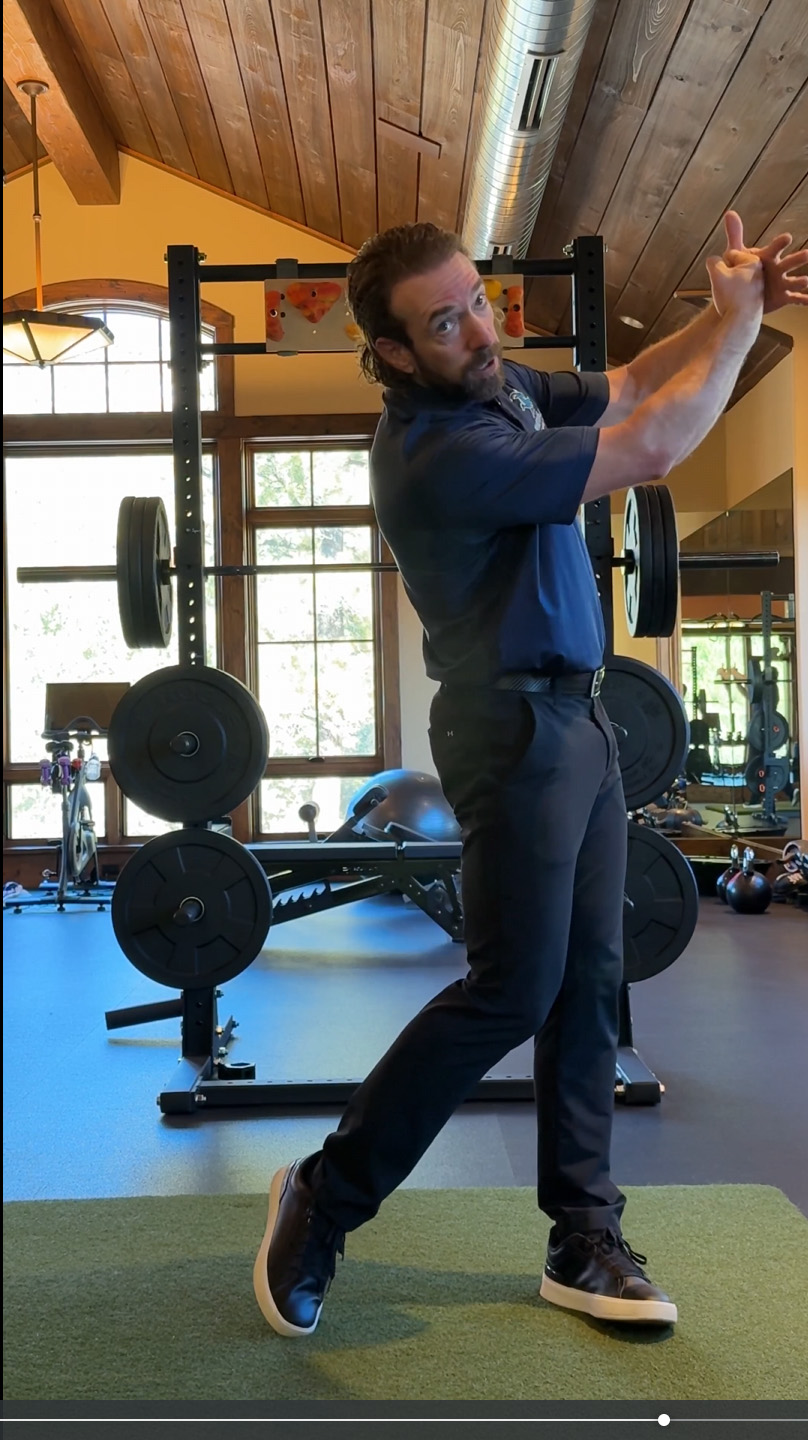Video Menu
My Favorite Videos
My Favorite Videos
Jason Day vs. Rory Mcilroy | Power Post Up
Sorry, you need to be a member to access this video.
You Are Just Seconds Away - Become a member here!
Already a member? Log in now

In this video, I'll show you how Jason Day and Rory Mcilroy use ground force for speed and 1 keep move to be able to release the club with tons of speed in the golf swing.
Hey, what's up, Rotary Swing Golfers?
Welcome back to this week's Tour Analysis.
I'm your instructor, Chris Tyler, And this week we are going to be doing a showcase showdown here with two of the world's best players, Jason Day and Rory McIlroy, Who?
We saw square off this past weekend at the Match Play Championship in the semifinal match.
Where Jason Day was ultimately able to prevail and then move on to the finals, where he picked up his next victory out there.
So congratulations to Jason Day.
And this week we're going to be focusing in on clubhead speed.
A lot of people come to the website really wanting to ramp up their clubhead speed.
We're going to be focusing in on one of the most powerful moves that you can make in the golf swing to help get a good boost in speed, and that is posting up and releasing.
I'm going to be talking about one really critical move.
When you start to post up, that's going to help you get maximum speed at the bottom of the swing art.
Let's go ahead and get started now.
Okay, guys.
So as I said in the opener, we are going to be focusing in on speed this week.
And these are two really good candidates to start showing you.
One of the more powerful moves that you can start to add to your golf swing once you've started, to make sure that your weight transfer is in place.
Now, weight shift is extremely critical for the golf swing.
And if you've started to master your weight shift from the right side back over to the left side, and you're really starting to wake your legs up, then this is a great move to start to be able to really increase that clubhead speed.
So I will put a disclaimer at the front of this and say that if you haven't mastered weight shift, Then you need to make sure that you have that stuff in place before you start working on posting up properly.
But posting up will be much easier with your weight moving over to your lead side.
So let's go ahead and take a look at things here.
I'm going to go ahead and get both players up to the top of their swing.
Okay, and you're going to see a very similar style looking golf swings up to the top.
Yeah, there is some minor differences in the way they rotate.
There's some minor differences in the hand position at the top of the swing.
Jason does use a little bit more elevation here.
Rory's tends to look a little bit flatter at the top of the swing.
Again, both of these golfers have very, very good golf swings through the takeaway and the backswing.
Are there things that we might change in the downswing to allow them to be a little bit safer?
Yeah, of course.
But again, we're not going to bash either one of these players.
They're both extremely fun to watch.
Jason's obviously battling with a little bit of a bulging disc issue right now in his back, And hopefully he gets that resolved on the Sooners side so he can continue to grace us with his presence out there.
So just taking a look at the big moves over to the lead side here, you're going to see it done a little bit differently from Jason and Rory.
Rory is going to make a little bit more of what we call a squat move here.
So if you watch his blue shirt here, it's kind of peeking out underneath the line.
What I want you to do is watch how he sits into his lead side here.
So you're going to see that it drops about maybe two to three inches as he's starting to work and shift his weight to his left side.
Now if you shift your attention over here to Jason, you're going to see very little squat move here.
His hips drop maybe about an inch or so, maybe a half inch.
Not a giant sit move here.
Now a lot of you would probably ask me, well, which one is better?
Okay, so I think of the squat move as more of a graduate level move.
Not that Jason Day is not ready for a graduate level move.
He's just, he has balanced his golf swing out with proper width, proper leverage, and proper rotation.
And he obviously maximizes club head speed with his equation.
Rory has got tons of speed throughout the golf swing.
He's got good width.
He's got good leverage.
He's got good rotation.
He's just, he's allowing himself to use a little bit more ground force in his swing.
So if Jason was to run out of speed at some point, which I don't foresee happening, and he wanted to add a little bit more ground force, then yeah, he might want to add a little bit more of a squat move.
But again, it's not super imperative.
The main thing here is that when you're making the shift over to your lead side, is that both players have maintained the flex in their legs.
Okay, so they're making it, they're making a giant shift over to the left side and they're maintaining the flex in their knees.
Rory's actually increasing his just a little bit.
Now, I used a big word here by talking to you guys about the big shift over to the left side.
This may look like there's a lot of weight into their trail leg at this point, but I can assure you that there's not a lot of weight over in this trail side.
I would call it probably about 30% of their weight still in their right foot % of their weight in their left foot, maybe even just a little bit more.
Now, when we start to make sure that we get our weight into that left side, this is where we're going to start to make that big, powerful move.
We're going to start to drive this left heel into the ground.
Okay, so we've made a big shift.
Lead arm comes down to about parallel to the ground.
Shoulders are still wound up a good 45 to 50 degrees.
Once we feel that weight hit that left heel, our job here is to be driving this heel into the ground.
So we're going to be pushing that heel into the ground.
And we're also going to be using the left obliques to start to rotate the hips away from the target.
Okay, so that driving of the left heel into the ground is making your leg work to a straighter position.
So that's going to cause you to go up.
And when you're going up, the club should be going down.
Now that's exactly, you want to be moving in the exact opposite direction of the golf club.
That's how you really maximize efficiency.
And that's how you're going to maximize your speed and consistency as well.
So also with the hips rotating, they're rotating away from the golf ball here.
That's moving you in the exact opposite direction.
That's also a great way to be able to get the club moving at proper speed with efficiency.
Okay, so you're going to see now, Here's the big key move here.
With the post up is I want you to pay very close attention to what both players' right legs do when they're starting to post up and release the club.
Okay, so here we go.
Left leg is starting to straighten.
Okay, as they're driving that foot into the ground, they're working up.
Watch this left leg on both sides.
You're going to see that it starts to straighten.
Okay, right at impact, it's at its straightest point.
And then the club releases.
Now watch the right leg.
See how it helps maintain the width between the knees here.
The club is extending out in front of their bodies.
And it keeps that width there long up to where the hands are almost above their chest.
And then you're going to see them swivel up onto their right toe.
That's the big key move there is being able to use the right side of the body as a break while the club is releasing in front of you.
A lot of times we see amateur golfers tend to push off the right leg, which can cause the body to spin through the hitting area.
And when your body is spinning through the hitting area, you are essentially you can be delaying off your release.
Or now you're, you're actually not allowing the club, the hands and the arms to act independently from the body.
That means your arms and your club head are going to be working at the same rate as the rotation of your body.
That's why we use the right side of the body as a break to be able to release the golf club.
That is the one of the most critical moves in the golf swing for producing club head speed is that we want to be able to shift our weight, get on the brakes and let the club release.
And both of these players do it extremely well.
Not saying that their bodies aren't rotating.
Okay.
I know a lot of people have, have kind of come to bat at that one, but they're, they have slowed their lower half down to the point where now they can let the club release.
And that's part of the kinetic chain.
That's any hitting or throwing sport.
You'll see that the body tends to come to a stall point and then the delivery point from the throwing or hitting motion.
It's a really, really great way to be able to create efficiency and the speed department.
So for those of you guys that have been struggling with this, definitely work on making sure that you shift your weight left, Use that left foot to post up by pushing that thing into the ground and then get on the brakes to that right side.
When you're releasing the club and you're going to see that you have tons of speed.
Okay guys.
So thanks again for tuning into this week's video.
For those of you that are joining us on the website, I've got some really, really great premium videos that are going to help you work on your sit move into that lead side.
It's actually called sitting into the left side.
We've got the roll of the right foot in the down swing, which you'll hear me talk a lot about.
We've also got the straight left legged impact.
That's a video that's going to talk to you about how to get some good muscle engagement onto that left side and how to really work that left leg into that straight position.
So you can start to work on your release.
All of these videos that I'm mentioning are going to be to the right hand side of the video player, underneath the Recommended Videos tab.
Just click that tab.
All the videos will start to populate.
Also, another good video that a lot of people started to get some good success with.
It's a video that I did that talked about fixing weight transfer.
So I would suggest that you work on making sure that you're transferring your weight over to your lead side, then start to work on posting up and releasing the club and you will start to see a very, very good size increase in club head speed.
So get your weight transfer down, post it up, get on the brakes and release that thing and you should be playing some of your best golf in 2016.






































































































































































































































































































































































































































































































Mike
Craig (Certified RST Instructor)
Steven
Craig (Certified RST Instructor)
Austin
Craig (Certified RST Instructor)
Austin
Craig (Certified RST Instructor)
Austin
Craig (Certified RST Instructor)
Giap
Craig (Certified RST Instructor)
Erik
Craig (Certified RST Instructor)
Kevin
Craig (Certified RST Instructor)
Steve
Joseph
Craig (Certified RST Instructor)
Dean (Certified RST Instructor)
Chris (Certified RST Instructor)
Craig (Certified RST Instructor)
Tom
Chris (Certified RST Instructor)
Lance
Chris (Certified RST Instructor)
Heikki
Chris (Certified RST Instructor)